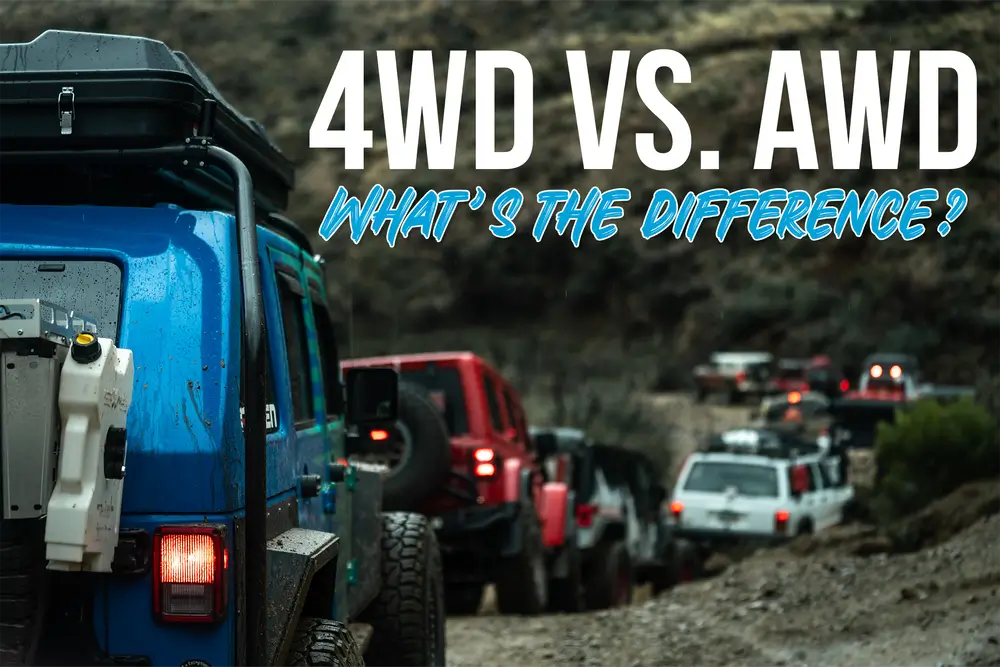
Differences Between 4WD and AWD
One thing that has confused many individuals during their vehicle purchasing endeavors is that 4-wheel drive (4WD) and all-wheel drive (AWD) systems are different. As both names suggest, the vehicle is driven by all four wheels at the same time. However, contrary to popular belief, the way they operate and what terrains they’re best suited for is where their differences shine.
In this post, we’ll go over the key differences between 4WD and AWD. We hope through this article, you can better understand these systems and make a more informed decision on which type of vehicle is best for you and your needs.
The Difference in Functionality
On a very basic level, 4WD and AWD systems work in very similar ways, sending power to all four wheels of a vehicle at the same time. This differs from most sedans and 2WD vehicles, which typically power only the front or rear wheels.
4WD is unique in the sense that the driver can select whether to send power exclusively to the rear wheels or engage all four wheels at the same time. This selectivity in power delivery allows for 4WD to be turned off when not needed and on when you’re faced with obstacles or challenging terrain. An AWD system delivers power from the drivetrain to the wheels all the time, hence the “all” in “all-wheel drive.” AWD systems are great for improved traction and handling on wet or slippery roads. You can often find them in vehicles like the Toyota Highlander, Honda CR-V, and Nissan Rogue, to name a few.
The Difference in Performance
So, what do these differences mean for you? In general, if you want a vehicle built to handle off-roading, you’ll want to consider getting one with 4WD. The ability to select drive modes will allow you to engage all four wheels when necessary while avoiding wear and tear and improving fuel mileage when you disengage the front wheels.
If you plan to stick to paved or gravel roads and want more confidence in inclement weather, an AWD vehicle would be the choice for you. With AWD, you’ll rest assured when snow falls or the streets become icy and wet. Especially knowing that your car can detect and adjust power delivery to all four wheels if there is a reduction in traction.
Which Is Best for You?
Now that you’re more familiar with the differences between an AWD and 4WD system, we hope you can make a more educated decision when purchasing a new vehicle. If off-roading is at the top of your priority list, a reliable 4WD will do the trick. If on-road drivability and traction during inclement weather is important to you, an AWD vehicle is a great option.
If the time to make a decision is now, we encourage you to stop by Summit 4×4 Company or Summit 4×4 Off-Road Auto Sales and talk with a member of our crew. Our vast knowledge within the automotive and off-road industry makes us a reliable source you can count on. Our off-road shop, showroom, and auto sales team are ready to pair you with the rig and 4×4 aftermarket accessories to suit your adventure needs. Thanks for reading, and we hope to see you on the trails!






